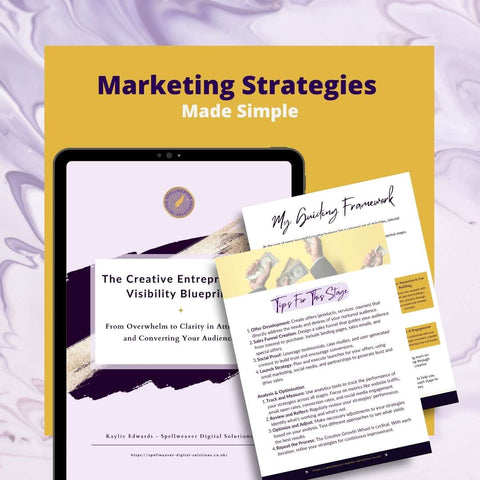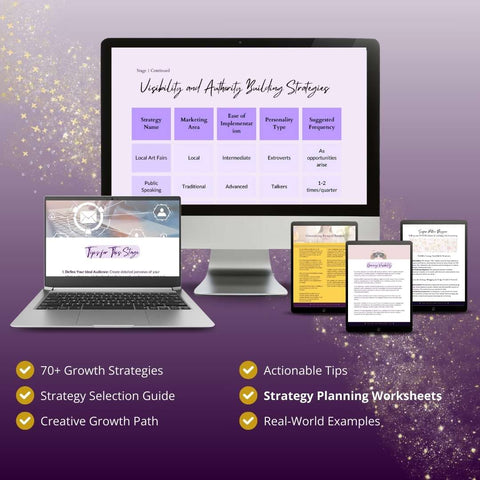Simplify your path to success with actionable steps that cut through the noise and get straight to results.
Affiliate Link Disclaimer: This blog post contains affiliate links, which means if you click on one of the product/service links and decide to make a purchase, we may receive a small commission at no extra cost to you. Both I and Delores are passionate about sharing resources and tools that we genuinely believe in. Our use of affiliate links helps support Delores' content and my own services and content creation, allowing us to continue to bring you valuable insights and information. Thank you for your support!
Maximizing Your Print-on-Demand Business
Have you ever wondered how your art could adorn products worldwide without the hassle of inventory or shipping?
Welcome to the transformative world of Print on Demand (POD), a realm where artists and designers like you can see their creations come to life on everything from apparel to home decor, reaching a global audience with ease.
I'm Kaylie Edwards from Spellweaver Digital Solutions, part of the dynamic team supporting Delores in her artistic and educational endeavors.

Through Delores' journey into POD, we've seen the incredible potential it offers for creatives to expand their reach and connect with fans in new, meaningful ways. Her success in platforms like Card Isle, Society6 and Zazzle showcases the vast opportunities awaiting artists ready to dive into the digital marketplace.
This guest blog post aims to equip you with practical strategies for launching and growing your POD business. Whether you're just starting out or looking to scale your existing operations, the insights here will guide you through the essentials of setting up your shop, crafting designs that sell, and leveraging marketing techniques to enhance your visibility.
Are you ready to turn your artistic vision into a flourishing online business? Let's explore how.
Section 1: Laying the Foundation for Your POD Business
Embarking on your Print on Demand (POD) journey begins with selecting the right platform for your art. Each platform, from Society6 and Zazzle to Spoonflower, offers unique advantages, catering to different types of artists and designers. For those looking to integrate POD into their own websites, services like Etsy + Printify/Printful provide a seamless way to offer your creations without managing inventory.
But how do you decide which is best for you, and what steps should you take to ensure your store's success?
Choosing the Right POD Platform:
- Society6 is ideal for artists focusing on a wide range of products, from art prints to home decor, offering extensive exposure to a diverse audience.
- Zazzle allows for more customization by the customer, perfect for designers who want to offer personalized options.
- Spoonflower specializes in fabrics, wallpapers, and home textiles, a niche market with a dedicated customer base.
- Etsy + Printify/Printful integration combines the artisan marketplace's vast audience with the ease of POD manufacturing, suitable for artists who wish to maintain a personal storefront with a wide range of products.
- Using your own website with POD integration gives you the most control over your brand and profits, ideal for established artists ready to invest in their online presence.
Action Steps to Set Up Your Store:
- Research and Select Your Platform: Consider your product range, desired level of control, target audience, and the type of art you create. Each platform has its strengths, so choose the one that aligns with your goals.
- Set Up Your Store: Follow the platform's setup process, which typically involves creating an account, setting up payment information, and agreeing to the terms of service. For your own website, integrate a POD service like Printify or Printful or one of the many out their (check which best fits your audience and your needs).
- Choose Your Products Wisely: Not all art works well on every product. Select products that complement your art style and appeal to your target audience. Start with a few items to test the waters.
- Focus on Niche Targeting: Identify a niche that resonates with your art style and personal interests. This will help you create more targeted designs and market your products more effectively.
- Maintain Brand Consistency: Ensure your store's aesthetic, product descriptions, and overall branding are consistent across all platforms. This helps build trust and recognition with your audience.
- Optimize Your Listings: Use relevant keywords in your product titles and descriptions to improve visibility on the platform and search engines. High-quality images and detailed product descriptions can significantly impact customer decisions.
- Promote Your Store: Leverage social media, email marketing, and other digital and offline marketing strategies to drive traffic to your store. Engaging with your community and sharing behind-the-scenes content can also enhance your brand's appeal.
By carefully selecting your POD platform and taking deliberate steps to set up and promote your store, you can create a strong foundation for your POD business. Remember, success in the POD industry requires patience, experimentation, and continuous learning. Start small, stay consistent, and your art will find its audience.
Section 2: Designing for POD Success

Creating art that sells isn’t just about showcasing your talent; it’s about designing with the market in mind. How do you create designs that not only resonate with your audience but also look fantastic on a variety of products?
This section dives into the essentials of crafting marketable designs for Print on Demand success, from trend research to ensuring your art translates well across different items.
Creating Marketable Designs:
- Stay Ahead with Trend Research: Keeping abreast of current trends is crucial. Use platforms like Google Trends, Pinterest Trends, Etsy Trend Reports, WGSN, and Instagram and follow industry experts to spot emerging patterns, themes, and color schemes that can inspire your next design collection.
- Versatility is Key: Design with multiple products in mind. A single artwork can adapt to phone cases, pillows, and tote bags if planned correctly. Think about the scalability and orientation of your designs to ensure they fit a range of products.
- Prioritize Quality: High-resolution, clear images are non-negotiable. Your designs should maintain their integrity and detail when printed on any product, from small stickers to large tapestries.
Action Steps for Design Creation:
- Select the Right Tools: Adobe Creative Suite (Photoshop and Illustrator) is the gold standard for creating professional designs. For vector art, Affinity Designer is a cost-effective alternative. Procreate on the iPad is excellent for digital painting and sketching.
- Leverage Online Trend Resources: Websites like Behance and Dribbble showcase current design projects and can be excellent sources of inspiration. Trend forecasting sites and design blogs can also provide insights into what’s next in the design world.
- Create a Design Library: Start building a library of elements such as textures, patterns, and icons that you can quickly adapt and incorporate into new designs. This library will save you time and help maintain consistency across your work.
- Test Your Designs: Before finalizing a design for sale, print a sample to ensure the colors, details, and overall look match your expectations. Many POD platforms offer sample orders at a discount.
- Seek Feedback: Use social media or design forums to get feedback on your designs before launching. Constructive criticism can help refine your work and make it more appealing to your target audience.
- Stay Organized: Keep your files and projects well-organized. Use cloud storage solutions like Dropbox or Google Drive for easy access and backup. Naming conventions and folder structures can save you time in the long run.
- Continuous Learning: The design industry is always evolving. Stay informed by taking online courses, attending webinars, and participating in design challenges. Platforms like Skillshare, Udemy, and Coursera offer a wide range of courses to hone your skills. Not to mention DeloresArt School 🤓😉.
By focusing on creating marketable designs and utilizing the right tools and resources, you can significantly increase your chances of success in the POD market. Remember, the most successful POD artists are those who continuously evolve their designs to meet market demands while staying true to their unique artistic voice.
Section 3: Marketing Your POD Products
In the digital age, creating beautiful art is just the beginning. The key to turning your passion into profit lies in effective marketing. How do you get your products in front of the right audience? This section outlines strategic approaches to building an online presence that not only showcases your work but also drives traffic and sales to your POD store.
Building an Online Presence:
- Leverage Social Media: Platforms like Instagram and Pinterest are visual-centric and can serve as powerful tools to showcase your designs. Regular posting, engaging with your audience, and using relevant hashtags can increase your visibility.
- Master SEO: Whether you’re selling on Etsy, your own website, or both, understanding and implementing SEO (Search Engine Optimization) can significantly improve your store's visibility in search results, attracting more potential customers.
- Email Marketing: Building an email list allows you to communicate directly with your audience, share updates, new products, and exclusive offers. It's a direct line to your most interested customers.
Action Steps for Effective Marketing:
- Set Up an Instagram Business Account: This allows access to analytics, the ability to run ads, and adds a contact button to your profile. Post consistently, use stories to show behind-the-scenes content, and engage with followers to build a community around your brand.
- Optimize Your Etsy Store for SEO: Use keywords in your product titles, descriptions, and tags that potential customers might use to search for products like yours. Etsy’s Seller Handbook offers excellent tips on SEO best practices.
- Start an Email List: Use platforms like Mailerlite, Flodesk, Aweber or ConvertKit to manage your list. Offer a freebie, such as a digital download or a discount code, as an incentive for people to sign up. This could be a lead magnet related to your art, like a free wallpaper or a printable calendar.
- Create Engaging Content: Beyond just promoting your products, share content that adds value to your audience. This could include tutorials, design tips, or insights into your creative process.
- Utilize Pinterest: Create pins for your products and inspirational boards related to your niche. Pinterest acts as a search engine, so use keywords in your pin titles and descriptions to attract users interested in your type of art.
- Collaborate with Influencers: Partner with social media influencers or bloggers in your niche to reach a wider audience. They can feature your products in their content, providing you with access to their followers.
- Run Targeted Ads: Consider investing in paid advertising on platforms where your target audience spends their time. Facebook and Instagram ads can be highly effective in driving traffic to your store, especially when targeted correctly.
- Track and Analyze: Use analytics tools provided by your social media platforms and website to track the performance of your marketing efforts. Understanding what works and what doesn’t allows you to refine your strategy over time.
By implementing these marketing strategies and action steps, you can build a strong online presence that not only showcases your art but also attracts customers to your POD products. Remember, consistency is key in marketing, and building a brand takes time. Stay patient, keep engaging with your audience, and continuously refine your approach based on the feedback and data you collect.
Section 4: Scaling Your POD Business

Once you've established your Print on Demand (POD) business, the next step is scaling. Growth can come from expanding your product range and exploring new sales channels. This section will guide you through diversifying your offerings and reaching new markets, ensuring your business continues to thrive and grow.
Expanding Your Product Range:
- Identify Opportunities: Look for trends in customer requests or gaps in your current product lineup. Consider seasonal items or products that complement your existing designs.
- Market Research: Use tools like Google Trends and social media to see what products are gaining popularity. Also, check what's selling well on POD platforms you use.
- Test Small: Before fully committing to a new product line, do a small test run. Use social media polls or email surveys to gauge interest among your existing customers.
Diversifying Sales Channels:
- Beyond POD Platforms: While platforms like Etsy, Society6, and Zazzle are great, expanding into offline sales channels can significantly boost your visibility and sales.
- Craft Fairs and Local Markets: These venues offer the chance to connect directly with customers and understand their preferences. They can also be a great source of immediate feedback on your products.
- Local Boutiques and Shops: Partnering with local businesses to sell your products can help you reach a new audience. It adds a personal touch when customers can see and feel your products in person.
Action Steps for Scaling Your Business:
- Selecting New Products:
- Evaluate the compatibility of new products with your existing designs.
- Consider the production costs and potential profit margins.
- Look for products that can be easily integrated into your current fulfillment process.
- Approaching Local Businesses:
- Prepare a professional portfolio of your best-selling designs and products.
- Research local businesses that align with your brand and target audience.
- Craft a personalized pitch highlighting how your products can add value to their store.
- Participating in Events:
- Research local craft fairs, art shows, and markets where your target audience is likely to attend.
- Prepare an attractive booth setup that reflects your brand identity.
- Offer exclusive items or discounts for event attendees to encourage direct sales.
- Leveraging Customer Feedback:
- Collect and analyze feedback from your customers on new products and sales channels.
- Use this feedback to refine your product offerings and marketing strategies.
- Monitoring Trends and Adjusting:
- Stay informed about trends in the art and design world, as well as in the POD industry.
- Be ready to pivot or adjust your strategy based on what’s working and what’s not.
Scaling your POD business involves a combination of expanding your product range and exploring new sales channels. By taking calculated risks, staying attuned to market demands, and leveraging both online and offline opportunities, you can grow your business and reach new heights. Remember, successful scaling is a gradual process that requires patience, persistence, and a willingness to adapt.
Section 5: Advanced Growth Strategies

For artists and designers looking to take their Print on Demand (POD) business to the next level, focusing on advanced growth strategies can significantly amplify your success. This section delves into leveraging customer feedback for product improvement and exploring collaborations and partnerships to enhance brand visibility and sales.
Leveraging Customer Feedback:
- Collect Feedback: Use automated emails post-purchase, surveys, and social media polls to gather insights from your customers about your products and their shopping experience.
- Analyze and Implement: Regularly review feedback to identify common themes or suggestions for improvement. Use this data to refine your product quality, design choices, and customer service practices.
- Show Appreciation: Acknowledge the time customers take to provide feedback. Consider offering a discount or a small freebie as a thank you, which can also encourage repeat business.
Collaborations and Partnerships:
- Identify Potential Partners: Look for influencers, bloggers, or other artists whose brand aligns with yours and who share a similar target audience. Their endorsement can introduce your products to a broader audience.
- Offer Value: Propose a collaboration that is mutually beneficial. For influencers, this might involve free products for review or a commission on sales generated through their referral. For artist collaborations, consider a joint product line that combines your talents.
- Create a Contract: To ensure clarity and professionalism, draft a simple agreement outlining each party's responsibilities, deliverables, and the terms of the partnership.
Action Steps for Advanced Growth:
- Setting Up Feedback Collection:
- Implement a customer feedback system on your website or through your sales platform.
- Schedule regular intervals to send out feedback requests to recent customers.
- Make it easy for customers to leave reviews directly on your product pages.
- Analyzing Customer Feedback:
- Use tools like Google Forms or SurveyMonkey to organize and analyze survey responses.
- Pay special attention to recurring comments or suggestions for areas of improvement.
- Initiating Collaborations:
- Research and list potential partners with a note on why a partnership would be beneficial for both.
- Reach out with personalized messages, highlighting what you admire about their work and proposing a collaboration idea.
- Prepare a clear outline of what you can offer, whether it's unique designs, shared profits, or exposure to your audience.
- Drafting Collaboration Agreements:
- Include details on the scope of the collaboration, timelines, financial arrangements, and how the products will be marketed.
- Ensure both parties agree on how the collaboration will be presented to audiences, including social media mentions and promotional materials.
By focusing on customer feedback and strategic collaborations, you can enhance your product offerings and significantly increase your brand's reach and reputation. These advanced strategies require a proactive approach and a willingness to engage deeply with both your customers and potential partners. The effort can lead to improved customer satisfaction, innovative product lines, and a stronger position in the competitive POD marketplace.
Feeling lost in the vast world of POD marketing? Imagine having a guide that's as reliable as your favorite old map, leading you through the maze of strategies to find the ones that truly fit your unique journey.
Introducing "The Creative Entrepreneurs Visibility Blueprint - From Overwhelm to Clarity in Attracting and Converting Your Audience." This isn't just any guide; it's a carefully curated collection of over 70+ strategies, tailored to help you navigate the complexities of growing your business with ease and confidence.


Here's What You'll Discover:
- Why most creatives struggle with visibility and how unlocking this mystery can skyrocket your sales.
- Clear, actionable steps to move from feeling overwhelmed to achieving clarity and success in your business.
- Insights on balancing your marketing efforts with your creative process and personal commitments.
- The one mindset shift about marketing that's holding you back, while others are using it to thrive.
- A selection of strategies to effectively attract and engage your ideal audience.
Why Wait?
Grab this blueprint and start charting a course towards a more focused and fulfilling creative journey. No magic wands required, just your passion and the right strategies at your fingertips.
Download "The Creative Entrepreneurs Visibility Blueprint" now and begin your journey from overwhelm to clarity. Let's unlock the potential of your POD business together!
Conclusion:

Embarking on a Print on Demand (POD) business journey offers an exciting avenue for artists and designers to share their creativity with the world while generating income.
As we've explored throughout this post, laying a strong foundation, creating marketable designs, effectively marketing your products, and strategically scaling your business are key components to your success in the POD industry.
Remember, the journey to building a thriving POD business is both an art and a science, requiring a blend of creativity, strategic planning, and persistence.
I encourage you to dive into the resources provided, leverage the actionable steps outlined, and join a community of like-minded individuals who can offer support, insights, and encouragement.
Whether you're just starting out or looking to expand your existing POD business, there's never been a better time to take action and turn your artistic vision into a profitable reality.
Resources and References:
For those looking to deepen their understanding of Print on Demand (POD) and explore further into the strategies for success, the following resources offer valuable insights and guidance:
- Printful Blog - A comprehensive resource for anyone looking to start or grow their POD business. Find tips on design, marketing, and e-commerce strategies. Visit the Printful Blog
- Shopify Blog - Offers a wealth of information on e-commerce and running an online store, including how to integrate POD products. Explore Shopify's Insights
- Etsy Seller Handbook - A great resource for artists and designers using Etsy in combination with POD services. It covers everything from setting up your shop to SEO and marketing. Check out the Etsy Seller Handbook
- Spoonflower Blog - Ideal for designers interested in creating and selling fabric, wallpaper, and home decor. Spoonflower provides unique insights into trends and design tips. Visit Spoonflower's Blog
- Zazzle Blog - Offers inspiration and tips for designers looking to create and sell on Zazzle, a popular POD platform. Explore Zazzle's Blog
- Society6 Blog - A source of inspiration and advice for artists looking to sell their artwork on a variety of products. Society6's blog also highlights successful artist stories. Visit Society6's Blog
- Creative Market Blog - Provides resources and tips for designers to sell their digital assets, which can complement a POD business. Check out Creative Market's Blog
- Skillshare - Offers a range of classes on digital art, design, and business strategies that can be beneficial for POD entrepreneurs. Explore Skillshare Classes
- "The Ultimate Guide to Print on Demand (POD)" by Shopify - This guide offers a deep dive into what POD is, how to start, and how to scale your business. Read the Guide
- "Building a T-Shirt Business" by Shopify - While focused on t-shirts, this free course provides valuable lessons on branding, design, and marketing that are applicable across all POD products. Take the Course
By exploring these resources, you'll gain a broader understanding of the POD industry, learn best practices for your business, and find inspiration to fuel your creative journey.
FAQ Section for Print on Demand (POD) Blog Post
Q1: What is Print on Demand (POD)? A1: Print on Demand is an e-commerce model where products are printed and produced once an order is placed, eliminating the need for inventory. This allows artists and designers to sell custom-designed products, such as apparel, home decor, and accessories, without upfront costs for production and storage.
Q2: How do I choose the right POD platform for my business? A2: Consider factors like product range, printing quality, integration capabilities with your online store, and the platform's reputation. Research and compare platforms like Society6, Zazzle, Spoonflower, and Etsy combined with Printify or Printful to find the best fit for your niche and business goals.
Q3: Can I sell POD products on my own website? A3: Yes, selling POD products on your own website is highly recommended for brand control and customer relationship building. You can integrate POD services like Printify or Printful with your website platform (e.g., Shopify, WooCommerce) to automate the process.
Q4: How do I market my POD products effectively? A4: Utilize social media platforms, SEO, email marketing, and content marketing to reach your target audience. Consistently post high-quality content, engage with your followers, and use targeted keywords to improve your online visibility. Offering promotions and leveraging email lists for direct marketing can also drive sales.
Q5: How can I ensure my designs are successful on POD platforms? A5: Research current trends, understand your target audience's preferences, and create versatile designs that can be adapted across multiple products. Ensure your designs are high quality and reflect your unique artistic style to stand out in the marketplace.
Q6: What are some strategies for scaling my POD business? A6: Expand your product range carefully based on market demand and customer feedback. Explore additional sales channels, such as local boutiques or craft fairs, and consider diversifying your online presence across multiple POD platforms. Collaborations with influencers or other artists can also help increase brand visibility and sales.
Q7: How important is customer feedback in a POD business? A7: Extremely important. Customer feedback helps you understand what products and designs resonate with your audience, allowing you to make informed decisions about future creations. It also provides insights into areas for improvement in product quality and customer service.
Q8: Can I collaborate with other artists or influencers to grow my POD business? A8: Yes, collaborations can be a powerful way to expand your reach and introduce your brand to new audiences. Partner with artists whose style complements yours for collaborative product lines, or work with influencers who can showcase your products to their followers.
Q9: How do I keep my POD business profitable? A9: Focus on creating unique, high-quality designs, optimizing your production costs, and pricing your products competitively. Regularly analyze your sales data to understand which products are performing well and adjust your strategy accordingly to maximize profitability.
Q10: Where can I find more resources to learn about POD? A10: The resources and references section provided at the end of this blog post is a great starting point. Additionally, online forums, webinars, and courses dedicated to POD and e-commerce can offer valuable insights and learning opportunities.
